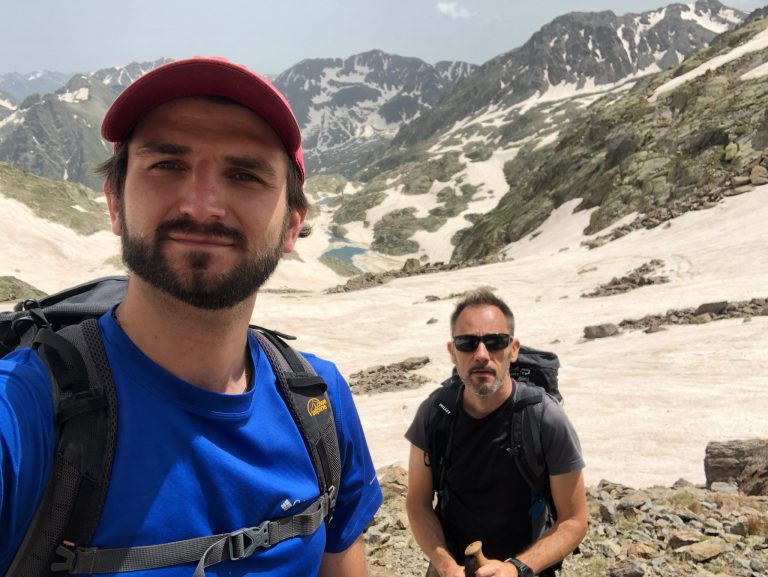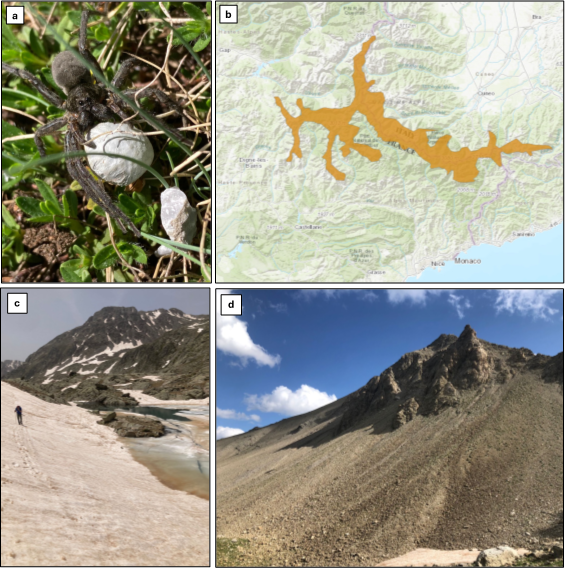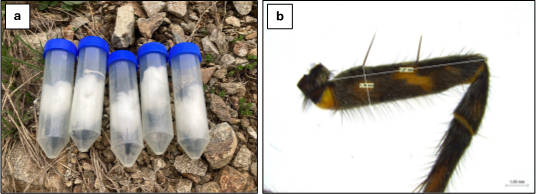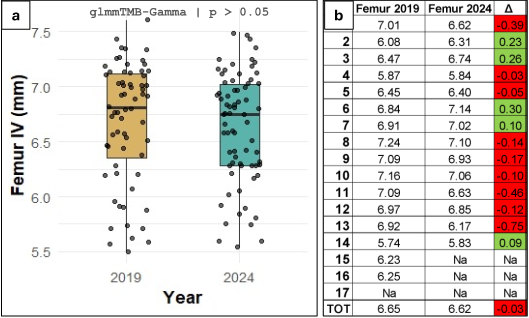Launched in March 2024 with support from the TETTRIs cascade funding, the CRYPTERS project aims to uncover the hidden diversity of Alpine spiders, focusing on Vesubia jugorum, a wolf spider that inhabits Europe’s most extreme environments. With over €58,000 in funding, the project is investigating how these spiders, found in the rocky highlands of the Mercantour-Alpi Marittime Natural Park, are responding to climate change.
The surprising importance of spiders in the Alps
Spiders might make some people uneasy, but they play a key role in ecosystems. One particularly fascinating species is Vesubia jugorum, a wolf spider known for its ability to live at high altitudes. What makes this spider even more intriguing is the limited understanding of its biology and evolutionary history, leaving much to be discovered.
Vesubia jugorum thrives in extreme environments, inhabiting rocky debris over 2200 metres in the biodiversity-rich Mercantour-Alpi Marittime Natural Park, straddling the border between France and Italy. Classified as “Endangered” by the International Union for Conservation of Nature (IUCN), it faces severe threats from climate change, which led to the initiation of a dedicated monitoring programme in 2019. This programme, repeated every five years, tracks how the species responds to changing environmental conditions by evaluating shifts in its traits and habitats.
However, effective conservation efforts require a more comprehensive understanding of the species’ taxonomy, particularly the cryptic diversity that might exist due to genetic isolation among populations. Cryptic diversity refers to the existence of distinct species that look very similar but are genetically different, making it hard to identify them through physical characteristics alone. This hidden biodiversity can be critical for conservation because different cryptic species may have unique ecological needs. Previous studies have suggested that overlooked taxonomic diversity could be hidden within these isolated populations, which CRYPTERS aims to investigate further.
About CRYPTERS
To protect Vesubia jugorum and its habitat, CRYPTERS is delving deep into the genetic makeup of these spiders to understand how different populations might be evolving separately. The project is using advanced techniques such as multilocus genetic markers to examine multiple parts of the spider’s DNA. These tools help identify specific regions of the genome that can highlight differences between populations, showing whether certain groups of spiders are isolated from others due to their locations.
By using advanced technology to look for small variations in the spiders’ genetic code (called single nucleotide polymorphisms or SNPs), the project can detect differences that aren’t visible just by looking at the spiders. This genetic information will then be combined with predictive models (species distribution models) that predict where these distinct populations live and how their habitats might change due to climate change.
These findings will help scientists create targeted conservation plans to protect the unique populations of Vesubia jugorum and ensure their survival in the Mercantour-Alpi Marittime Natural Park as the environment around them shifts.
“We look at the spider today and we wonder how long it has been there, it is amazing what genes can tell about its history!” reflects Marco Isaia, CRYPTERS project coordinator.
The team behind CRYPTERS
The CRYPTERS project is led by the University of Torino’s Terrestrial Ecosystems Laboratory, under the direction of Professor Marco Isaia, a leading expert in spider taxonomy. As the Principal Investigator of the project, Isaia’s research focuses on spiders, specifically on their taxonomy and ecological roles. His team represents the only Italian academic group dedicated to araneology (the study of spiders). Isaia is also a member of the European Society of Arachnology and serves on the IUCN’s Spider and Scorpion Specialist Group.

As the project leader, he oversees all activities, from leading fieldwork and collecting biological samples with park staff and students, to applying his expertise in spider taxonomy. Additionally, he coordinates outreach efforts with the protected area staff to share the project’s findings.
PhD student Marco Tolve plays a vital role in the CRYPTERS project, having integrated the project into his doctoral studies. Tolve has led much of the fieldwork and will work closely with the TETTRIs consortium to develop genetic markers for the spiders. Once validated, these markers will be used to update the conservation status of Vesubia jugorum through species distribution models. “It is awesome to have the opportunity to visit these places and investigate the history of this spider. Learning from the past is fundamental to preserve it in the future,” says Tolve.
What has been achieved so far?
Since March, CRYPTERS has made significant progress. The field team successfully collected 71 female Vesubia jugorum (Fig. 1a) individuals from 15 different locations within the species’ range (Fig. 1b). Collecting these specimens was no easy task—the late spring snowfalls in the Alps buried much of the rocky debris where the spiders are found, turning the collection process into a real “treasure hunt” (Fig. 1d).

In the lab, the team performed detailed morphological measurements on the spiders, focusing on the length of the fourth leg’s femur (Fig. 2b), which is an important feature for identifying differences between individuals. After these measurements, all the spider specimens were carefully preserved for further genetic analysis, which will be done in collaboration with TETTRIs partners.

Initial analysis of the spiders’ physical traits didn’t show major changes in the overall population compared to the baseline study from 2019. However, there were some differences in leg length between specific local populations, which could be linked to localised changes in environmental factors, like the amount of snow in their habitats.

Lastly, the team has also held a successful dissemination event at the Mongioie Refuge in collaboration with the Mercantour-Alpi Marittime Natural Park. During this event, over 100 participants learned about the CRYPTERS project and enthusiastically joined the collection of Vesubia jugorum specimens, contributing to the project’s hands-on conservation efforts!
What’s next for CRYPTERS?
In the coming months, CRYPTERS will turn its focus to molecular analysis at the Royal Belgian Institute of Natural Sciences and the Vienna Museum of Natural History. The aim is to develop genetic markers that will reveal the cryptic diversity hidden within the Vesubia jugorum populations.
This work is expected to significantly advance the field of spider taxonomy, shedding new light on species that have long been overlooked and contributing to biodiversity conservation in the Mercantour-Alpi Marittime Natural Park. Despite being an area renowned for its rich variety of species, many organisms, including spiders, remain poorly understood due to the limitations of morphological and genetic research.
Stay connected
Follow @italian_spiders on X to keep up to date with CRYPTERS work.
For more information on CRYPTERS visit: https://tettris.eu/3rd-party-projects/crypters/

